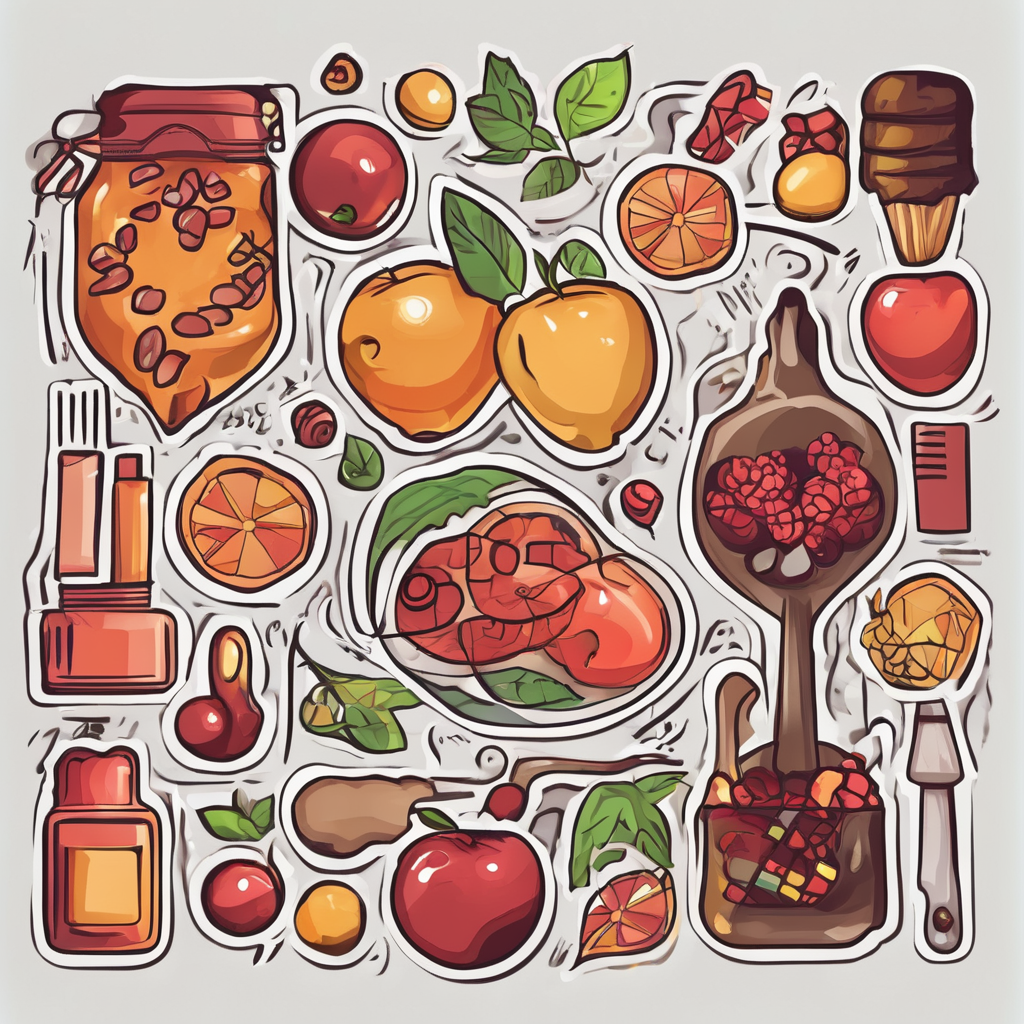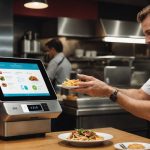Creating an Allergen-Free Kitchen in Your Family Restaurant: A Step-by-Step Guide
Managing food allergies in a restaurant setting is a critical aspect of ensuring the safety and satisfaction of your customers. With the increasing awareness and prevalence of food allergies, it’s more important than ever to create an allergen-free kitchen that is both safe and welcoming for all diners. Here’s a comprehensive guide to help you achieve this.
Understanding Food Allergies and Allergens
Before diving into the practical steps, it’s essential to understand what food allergies are and which allergens you need to be aware of. Food allergies are severe reactions to specific foods that can cause a range of symptoms, from mild discomfort to life-threatening anaphylaxis.
Have you seen this : Transform Your Kitchen: Essential Tips for UK Homeowners to Boost Air Quality
The FDA and other regulatory bodies have identified several major food allergens that must be considered:
- Celery
- Cereals containing gluten (e.g., Wheat, barley, rye, and oats)
- Crustaceans
- Eggs
- Fish
- Lupin (a flower that can be found in flour)
- Milk
- Molluscs (including sea mussels, whelks, and land snails)
- Mustard
- Nuts (referring to tree nuts like almonds and hazelnuts)
- Peanuts (legumes grown underground)
- Sesame seeds
- Soya
- Sulphur dioxide / sulphites (found in dried fruit, some meat products, and wine and beer).
Training Your Staff on Allergen Awareness
Effective allergen management begins with well-trained staff. Here are some key steps to ensure your team is equipped to handle food allergies:
Additional reading : Transform Your Kitchen: Essential Tips for UK Homeowners to Boost Air Quality
Who Should Receive Training?
All members of staff who handle or prepare food, from those taking orders to those in the kitchen, need to be aware of the 14 major allergens. This includes knowing which dishes contain allergens, how ingredients should be handled, and how to communicate this information to customers.
How to Train Your Staff
- Use Technology: Utilize training software and digital checklists to ensure consistent and updated information. For example, Access Hospitality’s training solutions can help streamline this process.
- Hands-On Training: Conduct regular workshops and demonstrations to show staff how to handle allergenic foods safely.
- Clear Communication: Ensure that staff know how to clearly communicate allergen information to customers. This can include using chef cards or direct communication with the chef or kitchen manager.
Organizing Your Kitchen for Allergen Management
A well-organized kitchen is crucial for preventing cross contamination and ensuring allergen-free meals.
Storage and Preparation
- Separate Storage: Store foods containing the 14 major allergens in sealed and labelled containers. Keep these containers separate from other ingredients to avoid cross contamination.
- Dedicated Workspaces: Designate specific areas in the kitchen for preparing allergen-free dishes. This includes using separate chopping boards, utensils, and cooking equipment to minimize cross contact.
Cleaning and Sanitation
- Thorough Cleaning: Clean cutting boards and utensils thoroughly with hot water and sanitizers after each use.
- Regular Audits: Conduct regular kitchen audits to ensure that all protocols are being followed and to identify any potential risks.
Using Technology for Allergen Management
Technology can significantly enhance your allergen management practices.
Procurement Software
- Automated Allergen Tracking: Use procurement software like Access Procure Wizard, which allows suppliers to load allergen and nutritional information against each product. This ensures that your menus, recipes, and dishes reflect accurate allergen data.
Digital Checklists
- Food Safety Checklists: Implement digital checklists like those from Trail to keep your processes organized and ensure compliance with allergen management protocols. These checklists can alert your team to take corrective action if any issues arise.
Communicating with Customers
Effective communication with customers is vital for ensuring their safety and satisfaction.
How to Communicate Allergen Information
- Clear Menu Labeling: Provide clear allergen information on your menus. This can be done by listing allergens alongside the dishes or by directing customers to a website or a separate allergen menu.
- Staff Training: Ensure that your front-of-house staff are trained to provide accurate and clear information about allergens. They should be able to answer questions about ingredients and preparation methods.
Customer Preparation
- Research Ahead: Encourage customers to research your restaurant’s allergen policies online or by calling ahead. This helps them feel more confident and prepared.
- Chef Cards: Suggest that customers bring chef cards that list their allergies and necessary precautions. This can be particularly helpful in busy environments or if there is a language barrier.
Finding Allergy-Friendly Restaurants: A Customer’s Perspective
For customers with food allergies, finding a safe and welcoming restaurant can be a challenge. Here are some steps they can take:
Research Online
- Use Apps: Utilize apps like Spokin and Fig that feature reviews from other diners with food allergies. These platforms can help identify safe dining options in your area.
Check the Restaurant’s Website
- Detailed Menus: Visit the restaurant’s website to review their menu for food allergen information. Many restaurants now include detailed ingredient lists or offer allergy-specific menus.
Call Ahead
- Direct Communication: Contact the restaurant directly and ask to speak with a manager or chef. Inquire about their ability to accommodate your allergy and ask if they have procedures in place to prevent cross-contact.
Practical Tips and Resources
Here are some practical tips and resources to help you create an allergen-free kitchen:
Templates and Checklists
- Fillable PDFs: Use fillable PDF templates to track food allergen information and ensure that all menu items are accurately labeled. Resources from Food Allergy Canada provide comprehensive templates and checklists.
Training Videos
- Educational Videos: Utilize training videos like those from Food Allergy Canada’s “Think Food Allergy” initiative. These videos provide essential information on food allergy basics and how to create a safer, more inclusive dining environment.
Example of an Allergy-Friendly Restaurant
Let’s take the example of Pizzeria Libretto, which has successfully implemented allergy-aware policies:
“At Pizzeria Libretto, we know that bringing people together over a meal builds community, and that should include people with food allergies. The Think Food Allergy training materials are easy-to-use and help our team be more allergy-aware. The video and fact sheets give our team the information they need to be confident when welcoming guests with food allergies,” says Chef Rocco Agostino.
Financial Benefits of Being Allergy-Aware
Accommodating customers with food allergies is not just a matter of public health; it also presents a significant economic opportunity.
“Accommodating the needs of food allergic consumers is not just a matter of public health but also a strategic economic opportunity for the foodservice industry. Restaurants that implement robust allergy-aware policies can tap into a significant, loyal customer base, enhancing their competitive edge and potentially boosting their bottom line,” notes Dr. Sylvain Charlebois, Professor and Senior Director at the Agri-Food Analytics Lab, Dalhousie University.
Creating an allergen-free kitchen in your family restaurant is a multifaceted process that requires careful planning, training, and communication. By understanding the key allergens, training your staff, organizing your kitchen, using technology, and communicating effectively with customers, you can ensure a safe and welcoming dining experience for all.
Here is a detailed bullet point list summarizing the key steps:
- Understand the 14 major food allergens and their implications.
- Train your staff on allergen awareness and management.
- Organize your kitchen to prevent cross contamination.
- Use technology for procurement, digital checklists, and training.
- Communicate clearly with customers about allergen information.
- Provide resources such as chef cards and detailed menus.
- Regularly audit your kitchen practices to ensure compliance.
By following these steps, you can transform your restaurant into an allergy-friendly destination, enhancing both customer safety and your business’s reputation.
Table: Comparison of Key Allergen Management Tools
| Tool | Description | Benefits |
|---|---|---|
| Procurement Software (e.g., Access Procure Wizard) | Automates allergen and nutritional tracking across menus and recipes. | Ensures accurate allergen data, simplifies compliance. |
| Digital Checklists (e.g., Trail) | Provides organized checklists for food safety and allergen management. | Enhances compliance, alerts staff to take corrective action. |
| Training Software | Offers comprehensive training on food allergy basics and management. | Ensures staff are well-trained, confident in handling allergens. |
| Chef Cards | Allows customers to communicate their allergies clearly to staff. | Reduces risk of miscommunication, ensures customer safety. |
| Fillable PDF Templates | Helps track food allergen information and label menu items accurately. | Streamlines allergen management, ensures compliance. |
By integrating these tools and practices into your restaurant, you can create a safe, inclusive, and successful dining environment for all customers.






